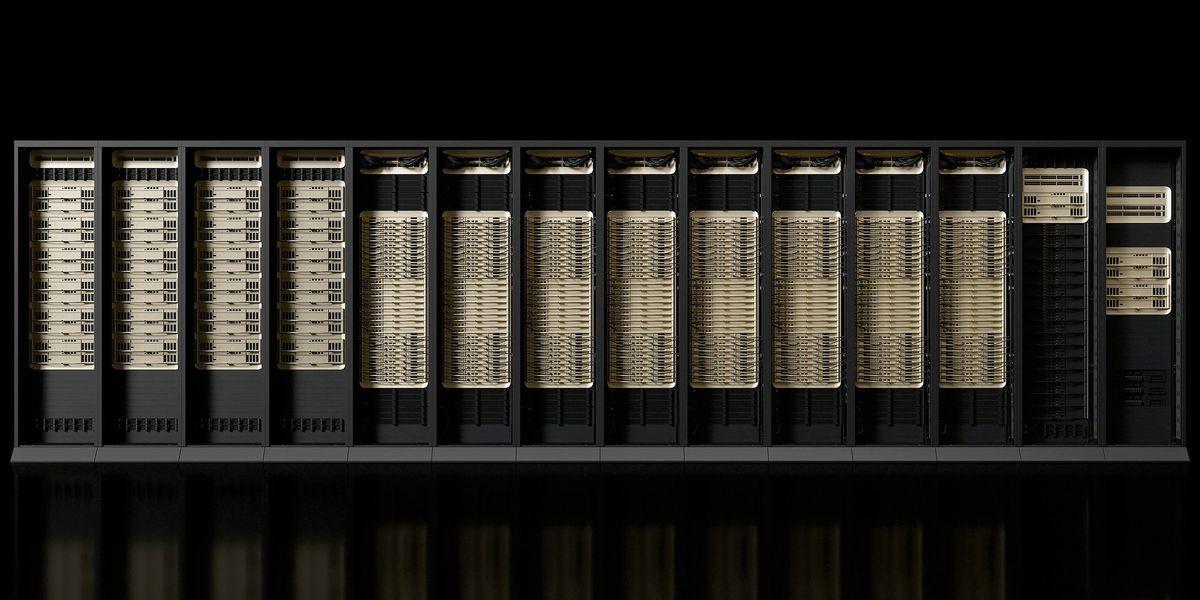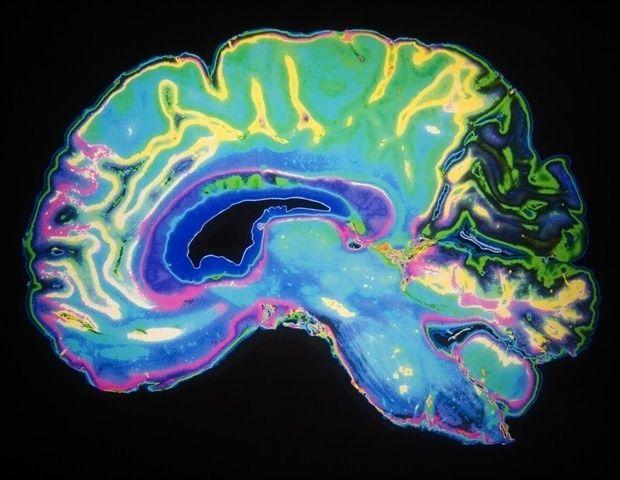EPFL Researchers Look to Fruit Fly Brains for Next-Gen Robot Controllers
2 Sources
2 Sources
[1]
EPFL turns to fruit fly brain to build smarter, more agile robot systems
Researchers at EPFL are now looking to the fruit fly to inform the future of robotics and AI. To create flexible controllers for robots, this team is researching how fruit flies use brain activity to move their limbs, whereas many engineers concentrate on robotic technology. In the future, these systems might power machines of any size, including possibly much larger robots as well as tiny robotic flies. Understanding how flies interpret their environment using mechanical sensors on their legs is a crucial component of their job. Sensor-embedded materials that assist robots in interacting with and adapting to their surroundings may result from this. According to scientists, for machines to learn in a meaningful way, they must have bodies that are capable of exploration, much like how animals -- including human infants -- learn by moving and interacting with their surroundings. Creating algorithms that can interpret and contextualize sensory data is a significant task. Instead of starting from scratch, the researchers draw inspiration from nature, particularly the neural systems of flies. This biological blueprint provides effective answers that nature has already tried. However, not every biological function is required for robotics. The team, therefore, stresses the value of interdisciplinary cooperation with biologists, who can assist in determining which brain components are pertinent. Although they do not intend to map the human brain, they think advances in our knowledge of simpler systems, such as the fruit fly, may yield important information for robotics and artificial intelligence.
[2]
Q&A: Fruit flies are a major source of inspiration in robotics
Researchers at EPFL's Neuroengineering Laboratory, led by Pavan Ramdya, aim to replicate the workings of the brain of the common fruit fly, Drosophila melanogaster. EPFL spoke with Ramdya about the exciting prospects for robotics. On the screen, white on a black background, a fly is magnified thousands of times and walks calmly across a spherical surface on its six legs. "Watch, in a second it'll do the moonwalk." We are in the heart of the EPFL Neuroengineering Laboratory with Pavan Ramdya, head of the lab, and a postdoctoral researcher, Maite Azcorra. She shines tiny focused pulses of laser light at the fly using a technique known as optogenetics, which uses light to activate specific neurons. As if on command, the fly moves its legs backward. And it looks just like a dance. Ramdya's 14-person research group has been studying the nervous system of these 2-millimeter-long insects since 2017. "Maite is currently studying how neurons that descend from the brain control motor functions," says Ramdya. The group hopes to eventually reverse-engineer the fly's brain and to model it for robotics. One major step forward was the development of a digital twin that the researchers can use to accurately simulate a fly's behaviors; another was an important breakthrough in understanding how neural networks turn brain signals into coordinated movements. EPFL sat down in the office of the New York-born neuroscientist to talk about his work. Can you describe the general idea behind your research program? Humans have been trying for centuries to build machines that can behave like animals or people. In Ancient Greece, for example, automated marionettes were quite common -- these were simple objects but they were already a form of biomimetics, in that they imitated how an actual body moves. That's the same idea we're pursuing here, except that we use far more advanced methods and systems that can truly bio-mimic animals like the fruit fly. Why are you studying Drosophila melanogaster specifically? There are more complicated animals of course, like mammals, but they're harder to study. And there are simpler ones like C.elegans, a worm with only around 300 neurons [flies have about 100,000 and humans have approximately 86 billion] but we can't learn as much about behavior from them. Unlike worms, flies have legs, and they do a lot with them -- walk around, clean themselves, manipulate obstacles and more. It's much more interesting for applications in robotics and neuroprosthetics to know how a creature with both wings and legs works. They're perfect specimens from that perspective: simple enough to study, yet complex enough to offer many insights. In your recent TEDx talk, you said that in the future robots used to explore and colonize new planets might look a lot like these flies. Yes, robots for space exploration will need to complete numerous tasks on their own and make decisions autonomously while moving in unknown, hostile environments. Engineers have been working to build such robots for decades, but for now, even the most sophisticated machines have nowhere near the agility of the fruit fly. Flies can do incredible things. Not only can they fly, they're also extremely stable due to their six legs. They can move in all three dimensions while performing other tasks with their legs. They're a major source of inspiration! How might the work you're doing influence the development of robotics and AI? Many engineers are working on the hardware side of robots -- for example, batteries and motors. That's not our focus. We're seeking to design their controllers. With the idea of developing a robotic fly, our main point of interest is to understand how it can control its limbs. That's why we're studying the fruit fly's nervous system -- to gain insights that will help us develop neural networks that can be used in robotics and AI. I'd also point out that the robots using these controllers don't have to be the size of a fly. As long as it is scaled appropriately, they can be any size -- even as big as a house, although that would be a little scary! But your research includes other aspects, too. That's right. One unique characteristic of flies is that their legs are covered with mechanical sensors. How do flies use all the information they gather to understand their environment and detect objects around them? How do they decide when to lift one or more of their legs over obstacles? Those are the kinds of questions we want to answer. And to do that, we're trying to develop materials patterned after the fly cuticle with integrated sensors that can be used in robots. Many robotics and AI experts have said that to create machines genuinely capable of learning, the machines must have bodies that can move around and explore their environment. Yes, that's a central theory held by scientists studying neurobiology and behavior. And it should be a central theory in AI too, since animals can behave more flexibly than robots. Engineers working in machine learning often point out that human babies constantly move around and touch things, exploring their surroundings to learn about the world around them. This process is much more effective than if we just presented them with videos of their environment. The sensors I mentioned earlier -- those on flies -- also serve this purpose. What are currently the biggest hurdles to developing systems that can learn by exploring their environment? One hurdle is to create algorithms that can process sensory data. If they can't contextualize these data, it would be very difficult for machines to learn the appropriate behaviors. It's important to stress that the solution does exist -- it's just hidden in animals' nervous systems. That's what we're trying to uncover. Instead of spending decades attempting to design a solution from scratch, why not look at what already exists in flies? Will that necessarily be an easier and faster approach? What we'll probably need is a combination of different approaches. Especially since animals have a lot of constraints and objectives that aren't relevant for our purposes. For instance, robots don't need to be able to reproduce or defecate. That's why we must also include biologists in our work and not just engineers. They are better able to know which parts of an organism we can ignore, such as neurons used to evacuate food, so that engineers don't focus on them. An interdisciplinary approach is essential for the work that we're doing. Is the goal to eventually map the human brain? I'll have to give you a selfish answer: for me, personally, that's not my goal. I have around 40 more years to live if I'm lucky, and I'd really like to see major breakthroughs in my lifetime that could show how biological systems work. That seems possible with the fruit fly, but it would be far more complicated for the human brain. Perhaps it's just a matter of scale -- maybe we simply need to take a fly's brain and multiply it by a million. That might give us something intelligent and would certainly be very interesting. But I'm not sure that it would capture human intelligence. I don't think we could use exactly the same approach for the human brain as for the fruit fly, because it would take too long. How is your approach to neuroscience different from that of other neuroscientists? In neuroscience, I'd say that over 99% of people are working on topics related to human health and medicine. Most studies that examine how neuroscience can inform the treatment of a disease, for instance, are carried out using mice or rats, because they're mammals like us. I think what our research group is doing can shift people's perspectives in two ways. First, we look at neuroscience not just in terms of human health, but rather in how it can be applied in robotics to build machines in new ways. And secondly, we draw attention to the smaller fraction of neuroscientists studying insects. We should keep in mind that many of the insects on our planet are under threat. Look at bees, and the important role they play in pollination. It's a critical issue. Fruit flies aren't a threatened species but they can provide insight into ones that are, helping to support conservation efforts. This can encourage people to view the world from a more eco-systemic perspective and appreciate the vital contribution made by biodiversity.
Share
Share
Copy Link
EPFL scientists are studying fruit fly neurobiology to develop advanced, adaptable controllers for robots, potentially revolutionizing AI and robotics across various applications, from space exploration to sensor-embedded materials.

EPFL's Innovative Approach to Robotic Control Systems
Researchers at the École Polytechnique Fédérale de Lausanne (EPFL) are pioneering a novel approach to robotics and artificial intelligence by studying the brain of the common fruit fly, Drosophila melanogaster. Led by Pavan Ramdya at the Neuroengineering Laboratory, the team aims to replicate the intricate workings of the fly's neural system to develop more agile and adaptive robotic controllers
1
2
.The Fruit Fly Advantage
The choice of the fruit fly as a model organism is strategic. With approximately 100,000 neurons, fruit flies offer a balance between complexity and simplicity that makes them ideal for study. They possess both wings and legs, enabling complex behaviors that are particularly relevant to robotics and neuroprosthetics
2
.Ramdya explains, "It's much more interesting for applications in robotics and neuroprosthetics to know how a creature with both wings and legs works. They're perfect specimens from that perspective: simple enough to study, yet complex enough to offer many insights"
2
.Innovative Research Techniques
The EPFL team employs cutting-edge techniques in their research:
-
Optogenetics: Researchers use focused laser pulses to activate specific neurons in the fly's brain, allowing them to study how neural signals translate into movement
2
. -
Digital Twin Development: The team has created a digital simulation of the fly, enabling accurate behavior prediction and analysis
2
. -
Neural Network Mapping: Significant progress has been made in understanding how neural networks convert brain signals into coordinated movements
2
.
Related Stories
Applications in Robotics and AI
The insights gained from this research have far-reaching implications for robotics and AI:
-
Adaptive Controllers: By understanding how flies control their limbs, researchers aim to develop neural networks that can be applied to robotic systems of various sizes
1
2
. -
Environmental Interaction: The study of mechanical sensors on fly legs could lead to the development of sensor-embedded materials, enhancing robots' ability to interact with and adapt to their surroundings
1
. -
Space Exploration: The agility and adaptability of fruit flies could inspire the design of autonomous robots for exploring and potentially colonizing new planets
2
.
Challenges and Future Directions
While the research shows promise, significant challenges remain:
-
Algorithm Development: Creating algorithms that can effectively process and contextualize sensory data is a major hurdle
2
. -
Interdisciplinary Collaboration: The team emphasizes the importance of working with biologists to determine which aspects of fly neurobiology are most relevant to robotics
1
. -
Scaling and Application: Translating insights from the millimeter-scale fly brain to larger, more complex robotic systems presents both challenges and opportunities
1
2
.
As Ramdya notes, "The solution exists -- it's just hidden in animals' nervous systems. That's what we're trying to uncover"
2
. This innovative approach to robotics and AI, inspired by the humble fruit fly, may well shape the future of adaptive, intelligent machines across a wide range of applications.References
Summarized by
Navi
[1]
Related Stories
Recent Highlights
1
X's Paywall Doesn't Stop Grok From Generating Nonconsensual Deepfakes and Explicit Images
Policy and Regulation

2
Nvidia Vera Rubin architecture slashes AI costs by 10x with advanced networking at its core
Technology

3
OpenAI launches ChatGPT Health to connect medical records to AI amid accuracy concerns
Technology








